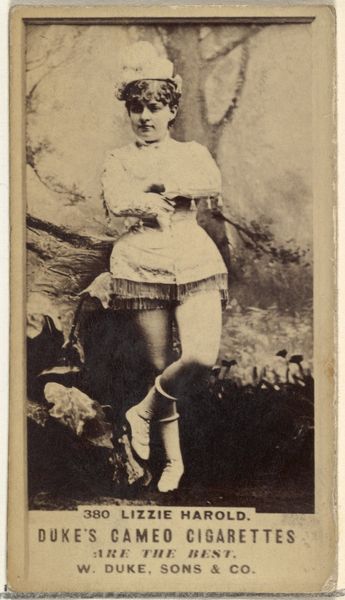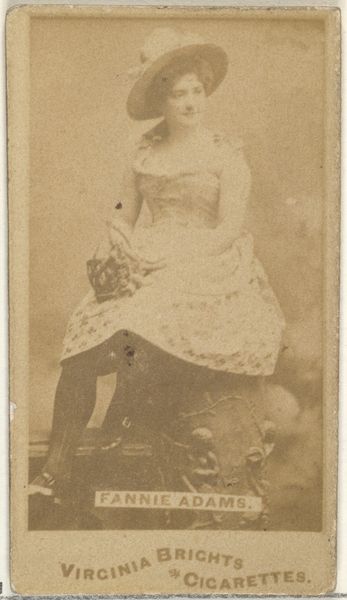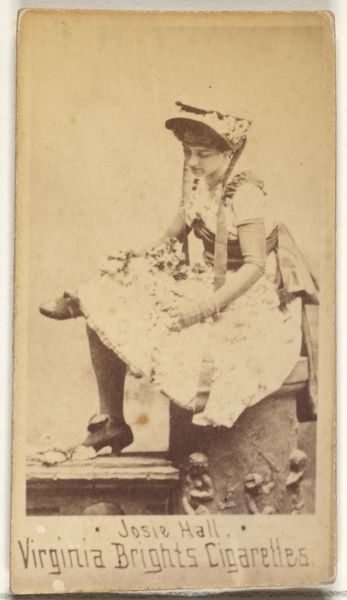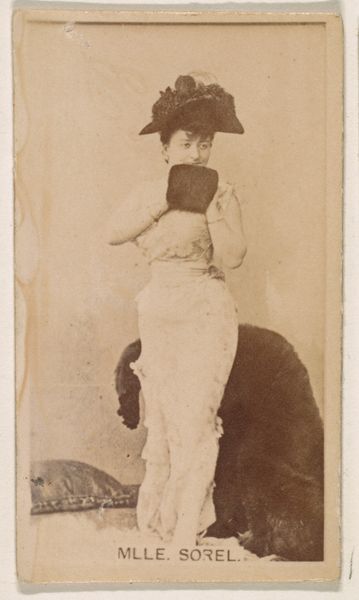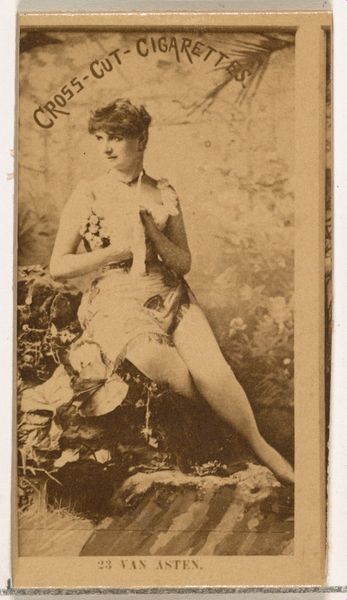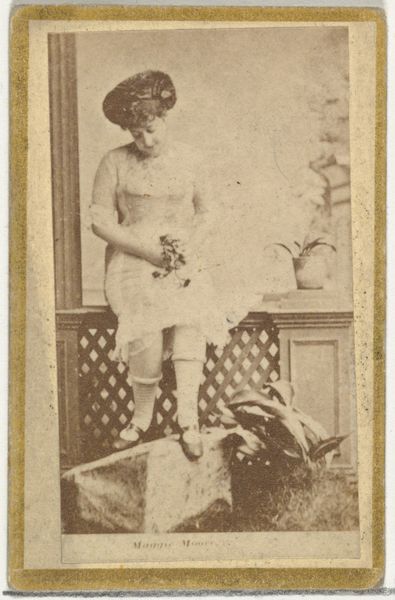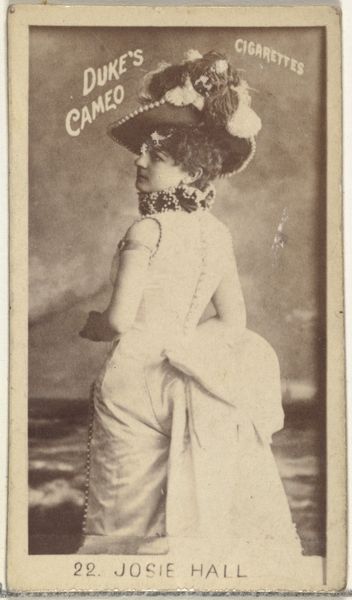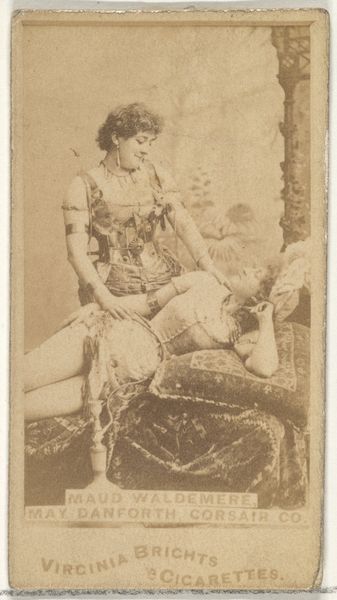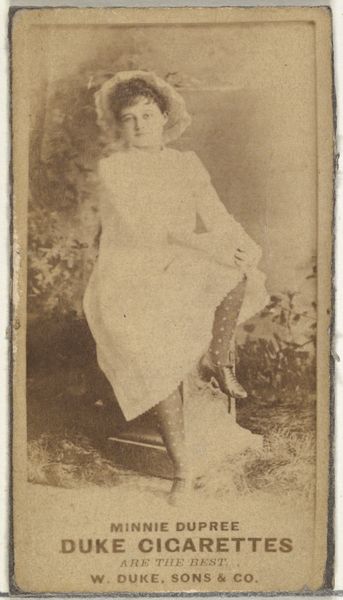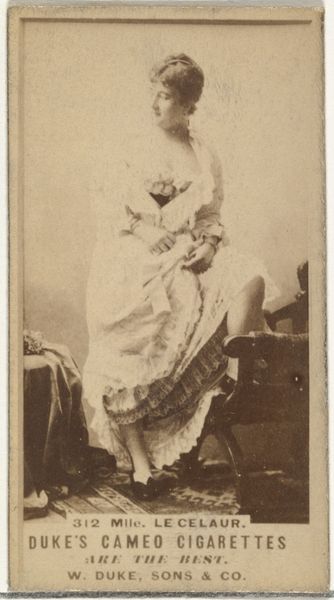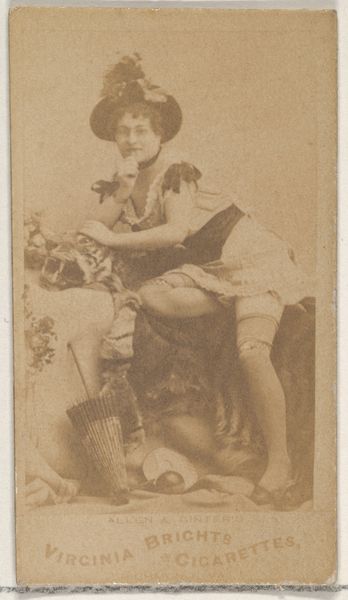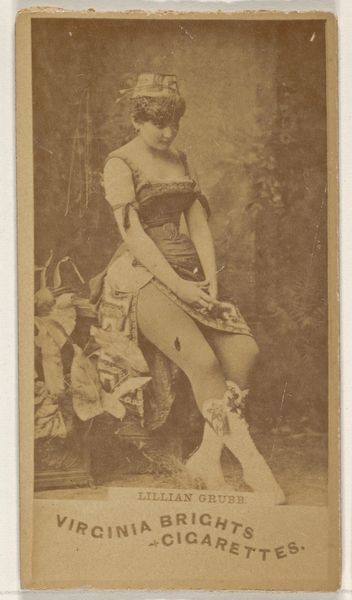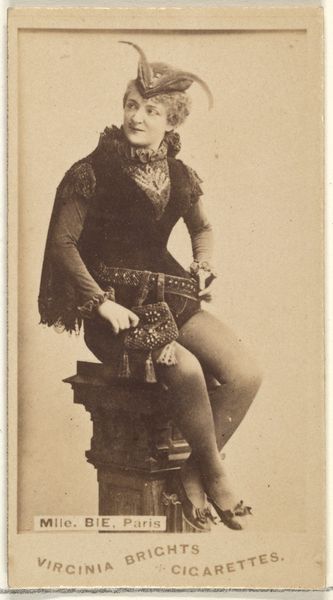
Card Number 605, Belle Urquehardt, from the Actors and Actresses series (N145-3) issued by Duke Sons & Co. to promote Cross Cut Cigarettes 1880s
0:00
0:00
drawing, print, photography
#
portrait
#
drawing
# print
#
figuration
#
photography
Dimensions: Sheet: 2 11/16 × 1 3/8 in. (6.8 × 3.5 cm)
Copyright: Public Domain
Curator: Here we have Card Number 605 from the Actors and Actresses series, a photographic print featuring Belle Urquehardt, dating back to the 1880s. Editor: The sepia tones give it such an antiquated, romantic feel. There’s a slight theatricality, which I suppose makes sense considering it's an actress, captured in a studio no doubt, leaning against what appears to be a painted backdrop. Curator: The formal arrangement—the subject's pose, the light falling across her face, the slightly obscured background—presents a curious tension. One is immediately drawn into contemplating the binary between staged artifice and candid reality. The composition, with its triangular structure emphasizing Belle Urquehardt’s relaxed yet posed form, really captures your gaze, wouldn't you agree? Editor: Oh, absolutely, but I'm equally fascinated by its materiality. This wasn't some grand artistic gesture, but rather a commercial one. To think this small photo was made as a collectible inserted into packs of Duke's Cross-Cut Cigarettes. It forces you to question art and mass-production during the late 19th century and the way actresses’ images are consumed. The purpose isn't necessarily artistic expression, it is product advertisement through carefully constructed glamour. Curator: Yes, the card certainly bridges disparate spheres of culture. On one hand we have a popular actress whose image denotes an aspiration to beauty and grace. On the other we have an object consumed casually with each purchase of tobacco, and its commodification certainly mirrors late-19th century shifts. What of that odd little stuffed monkey she is clutching, though? Surely there is a commentary on artifice itself with its addition? Editor: It's curious, certainly. Does its presence serve some narrative? I am not sure what we are intended to decipher; a statement about wealth, perhaps? I see these objects instead as symbols of labor. Duke and Sons employed masses of people to produce these cigarettes and the corresponding cards—an interesting counterpoint to the luxurious and leisurely lifestyle evoked here. Curator: So, while I find the work thought-provoking, perhaps in its complex approach to representation, you read a different symbolism inherent in its purpose and production? Editor: Precisely. These details—production, consumption—are as integral to understanding this piece as are the formal elements you have observed. Together they paint a complex picture.
Comments
No comments
Be the first to comment and join the conversation on the ultimate creative platform.
